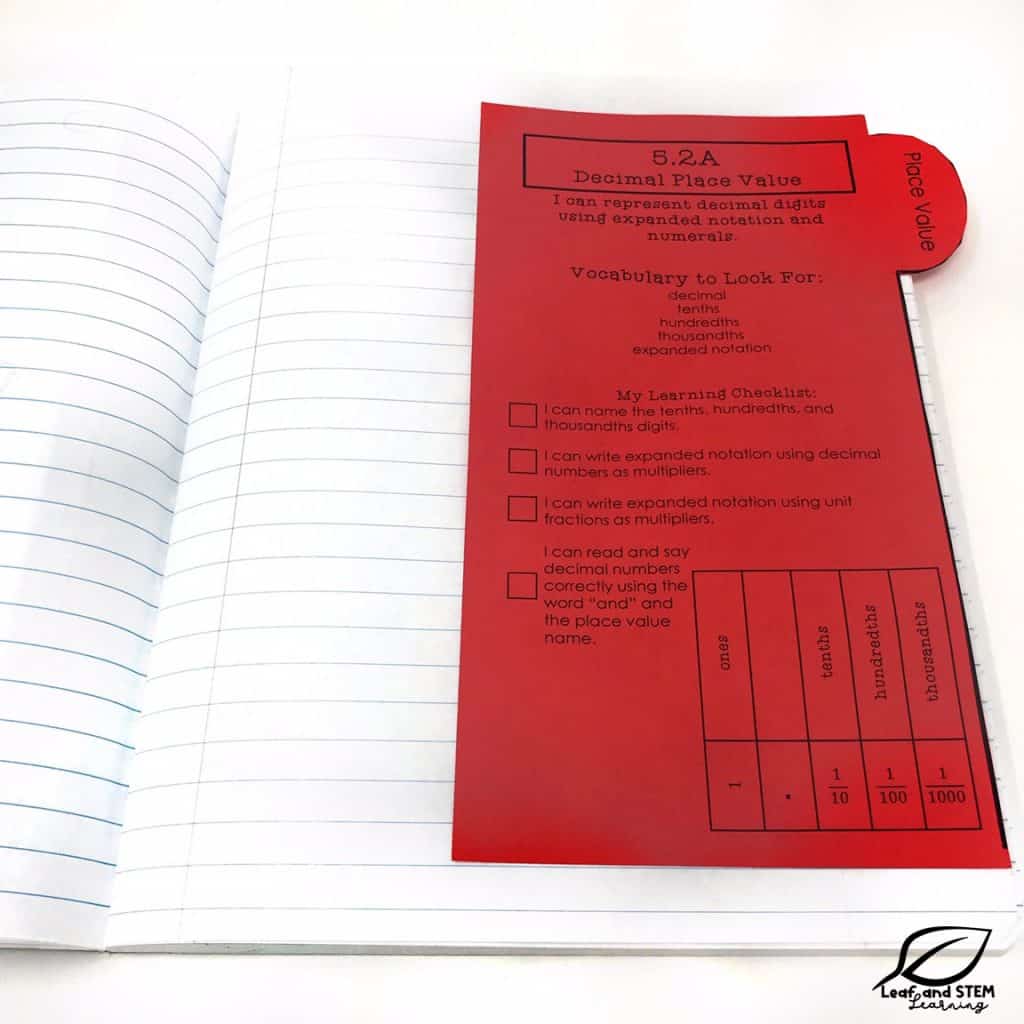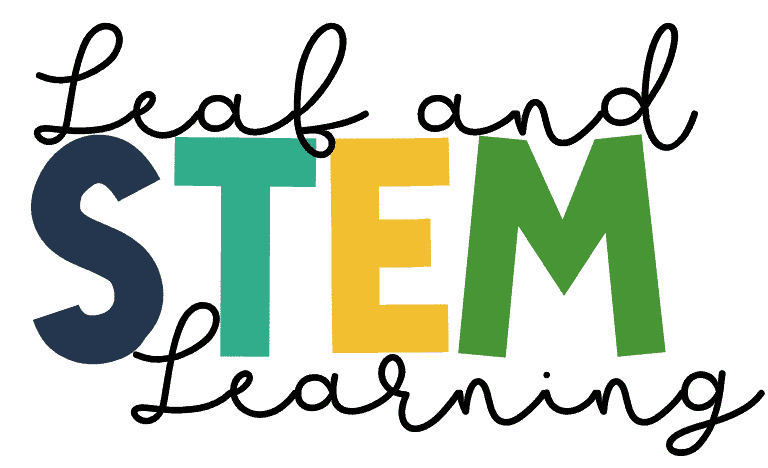You don’t have to think cute to have an interactive notebook that is a wonderful learning tool for your students! Many teachers think of complicated foldable notes and lots of learning time sacrifice for the “Pinterest Perfect” notebook. Real interactive notebooks do not waste a second of class time on learning.
You can use a few interactive notebook procedures to turn your students’ journals into a tool for not only notes, but also to help them learn to reflect on their own learning.
Getting Started with Learning Checklists
The tool you will learn how to implement in this post is called a Student Learning Checklist. To get started, you will need just a few things:
- A copy of your state standards or your scope and sequence.
- The templates from this post. The form to get them sent to your inbox as at the end of the post.

Step #1: Define your learning units
Think about each of the units you teach throughout the school year. Use the template provided to type the title for each unit. Also type the title on each of the tabs. For example, for 5th grade math, my first unit is Decimal Place Value and after that, Adding and Subtracting Decimals. In 6th grade my first unit is the Rational Number System.
These tabs will make it super easy for your students to quickly locate completed parts of their notebook to look up information. This leads to the first interactive notebook procedure your students need:
Students need a way to find any notes in their interactive notebook quickly and independently.
Students who cannot find the information in their notebook easily won’t look for it. If they cannot find it independently, then what is the point of having their own notebook?

Step #2: Break down the vocabulary and learning outcomes
In step one, you identified the learning units you will be teaching your students. Now you will identify the vocabulary words and write the learning checklists for each unit.
This is a dive into your curriculum and standards. Go one unit at a time and look for all of the standards that you teach as a part of that unit.
Identifying Vocabulary Words
I’ll go back to my example of my 5th grade Decimal Place Value unit. When I look at my standards, there are three standards that are taught in this unit. Reading through them, I can identify several words that are significant for students to understand to fully learn about decimal place value.
Picture of identifying vocabulary words.
Identifying “I can” Learning Statements
Once you have identified the vocabulary word, you will write the “I can” statements you want your students to use to analyze their learning. There may be only one for each standard, or there may be several depending on the complexity. Again, I’ll go back to the place value example:
5.2(A) represent the value of the digit in decimals through the thousandths using expanded notation and numerals
To complete this standard, students must be able to do at least two different skills. Both of these skills can be typed on to the editable checklist on the provided template:
- I can represent the digits in a decimal using expanded notation.
- I can represent the digits in a decimal using numerals.
Use student friendly language, but also include the academic vocabulary you want your students to be able to use. You can make the checklist general or more detailed. For example, the first “I can” statement can be split into two separate statements:
- I can represent the digits in a decimal using expanded notation with fractions.
- I can represent the digits in a decimal using expanded notation with decimals.
Do this for each of your units and type them into the template. You can add additional pages to the template if you have more than ten learning units.

Step #3: Implementing the interactive notebook procedures
Now that you have your learning checklist tabs ready, it is time to put them into use in your classroom. You may want to print them just a few units at a time or you can print them all for the whole year.
Printing on multicolored paper makes it easy for students to differentiate the tabs. If you do not have multicolored paper, you can print on white paper. Before cutting out the tabs, have your students color it in.
When you start a new unit with your students, pass out the learning checklists for the unit. Have your students cut along the solid line to create the paper tab. Your students can glue or tape them into their notebooks with the tab sticking out the side of the notebook.
Preview Vocabulary
Before beginning your notes or lessons for the unit, preview the vocabulary with your students. As you create notes with your class, have them look for these words as you teach. This will give your students a chance to start developing their own definitions for these words. Knowing what words are important will give your students a head start on ways to interact with their notes.
Student Self-Reflection with the Learning Checklist
Your students also need to understand the procedures for knowing if they know enough to check off the “I can” statement. This takes a bit of metacognition. When your students can:
- Rephrase the “I can” statement into their own words,
- Come up with a way to prove they can do what the statement is saying they can do, and
- Write about the process needed to solve that type of math problem,
…then they are ready to check that off their learning checklist. Encourage your students to go back and review their note, revising their work, and re-doing the activities in their notebook until they feel ready to check that off of their list.
When your students take an assessment or use an exit ticket, have them compare that to their checklist. Are there items they did well on that they need to check off? Are there items that they checked off, that they did not do well on? Have them use this as a part of their test corrections.
Learning Checklist Interactive Notebook Procedures Recap
While reading this post, you have discovered a way to make interactive notebooks more truly interactive for your students. Here’s a quick recap:
- Download the editable template. The form to get it sent to your inbox is at the end of this post.
- Add your units to the template.
- Find the vocabulary words and learning checklists you need by looking at your state standards or scope and sequence.
- Introduce the checklist to your students at the beginning of your unit.






1 thought on “Interactive Notebook Procedures to Help Students Reflect on their Learning”
This is something I have been looking for. I will be using it next year for my journals.